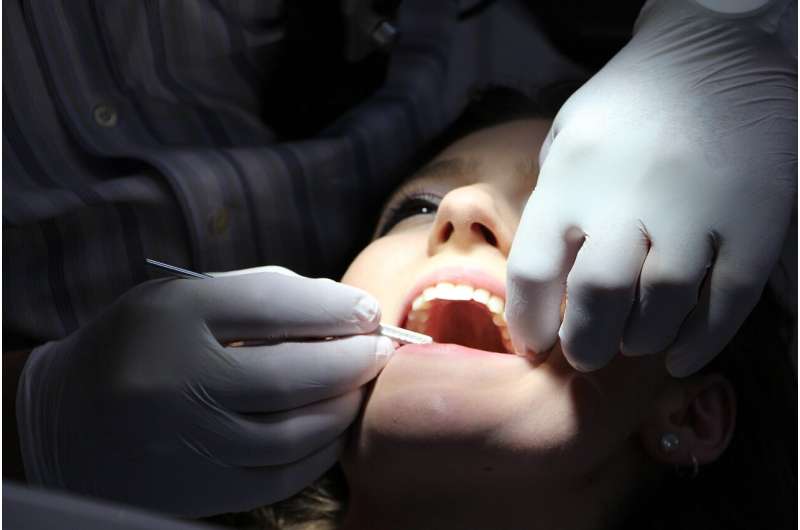
Mouths are filthy, harboring the second largest microbiome of the human body. Some bacteria can help break down food, among other responsibilities; other bacteria can travel into the mouth on food, fingers, pen caps and more to contribute to gum disease and other oral infections. More than good or bad bacteria, researchers have now unveiled that positive and negative bacterium are responsible for periodontitis symptoms—Gram-positive and Gram-negative, that is.
Gram-positive bacteria have thicker cell walls that retain the purple color from Gram stain, which can quickly differentiate cell types based on the width of their cell walls. For the first time, researchers found that Gram-positive bacteria can also induce the resorption of the bone that holds teeth in place, called the alveolar bone. The results were published on June 25 in Scientific Reports.
“This finding is a new concept: both Gram-positive and -negative bacteria are involved in the progression of periodontal bone loss,” said lead author Masaki Inada, associate professor in the Department of Biotechnology and Life Science at the Tokyo University of Agriculture and Technology (TUAT). “In a healthy condition, the tooth root is embedded into a socket in the alveolar bone in periodontal tissue. Infection of mixed multiple Gram-negative bacteria resulted in alveolar bone resorption and tooth loss induced by severe inflammation in periodontal tissues. It is well-known that the major pathogens of periodontitis are dominantly gram-negative bacteria. It was unclear whether gram-positive bacteria are associated with or contribute to the progression of periodontal bone loss.”
In a previous study, the researchers injected lipopolysaccharide (LPS) from Gram-negative bacteria into mice engineered without the gene that produces molecules that gather at sites of damaged tissue. Without these molecules, called prostaglandin E2 (PGE2), the LPS failed to induce bone loss. This suggested, Inada said, that PGE2 is required for periodontitis to progress.
“LPS is considered to be a dominant pathogen causing inflammatory bone resorption in periodontitis,” Inada said. “On the other hand, Gram-positive bacteria have been known to contribute to the inflammation of the periodontal gums in the initial phases of periodontitis; however, there was little evidence to show that these pathogens contribute to the induction of inflammatory bone resorption in the late phase of periodontitis.”
It comes down to bone remodeling, according to Inada. At what point does cell death from the infection outpace the body’s effort to create new bone cells?
“Several reasons could be counting and explaining on these phenomena,” Inada said.
In the case of LPS in the PGE2-deficient mice, the balance stayed in favor of bone formation. But when the researchers introduced lipoteichoic acid (LTA), a major component of the cell wall in Gram-positive bacteria, the balance tipped to bone resorption.
The researchers injected mice with periodontitis with LTA and found that it increased the amount of PGE2, resulting in bone resorption. They also saw that Gram-positive bacteria proliferated at a higher rate than Gram-negative bacteria and they preferred to occupy the depths of the teeth pockets—suggesting a more potent dose of LTA closer to the site of bone lose, according to Inada.
Source: Read Full Article
